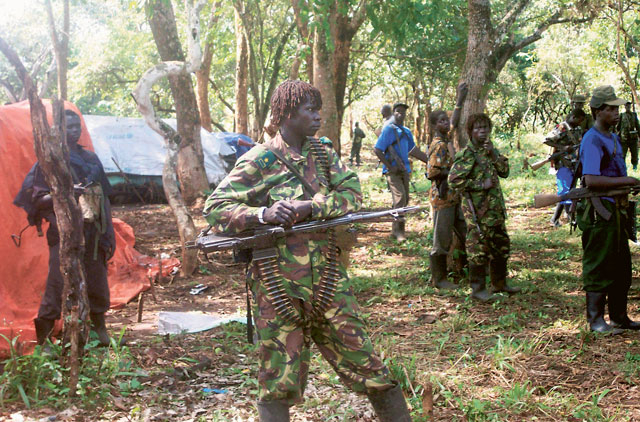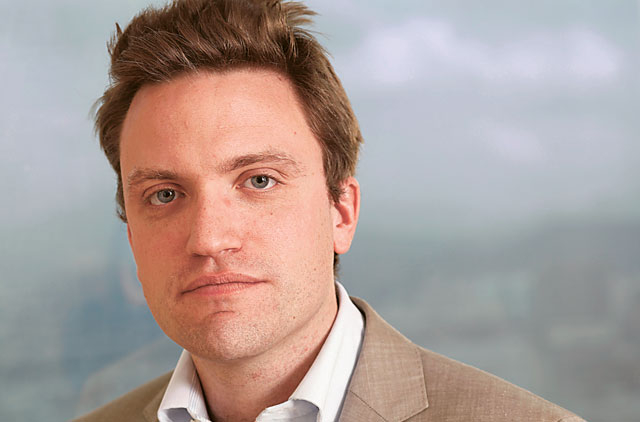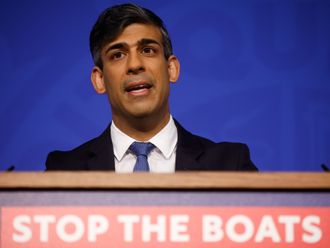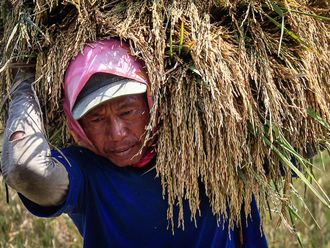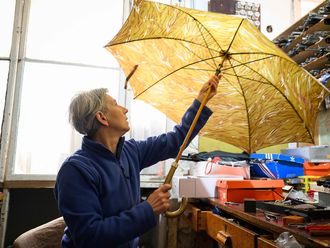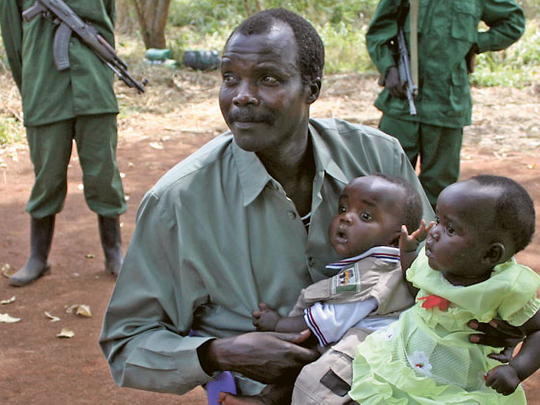
Dubai: Till recently, Jason Russell and Joseph Kony were both beyond the periphery of people's attention. Today both are at the centre of it.
While Russell's real story may take some time to emerge given last Thursday's public meltdown, the issue of Kony, in all its complexity, is there for all to see.
The atrocities of Joseph Kony may have come to the world's attention only recently thanks to Jason Russell's video Stop Kony 2012 but the fact remains that Kony has been a problem for more than two decades to anyone concerned about the abuse of human rights. What's disputable however is whether the problem of Kony is as simplistic as is depicted in the video.
In the wake of the video and global tumult over the Kony issue, many in Uganda, including its prime minister in his recent YouTube message, have pointed out the discrepancies between the current civilian reality in Uganda versus the one-dimensional depiction of its people in the video.
The predominant disclaimers being: Kony has been out of Uganda since 2006, the northern region is being rehabilitated at a satisfying pace, and third, the current socio-economic climate of Uganda is nowhere near what is being implied in the video. All three facts find no place in the video.
But what has emerged as the single biggest concern for political analysts and experts is the lack of understanding in most people of the relationship between Josph Kony and the political history of Uganda.
While Kony undoubtedly needs to be caught and punished, the simplistic argument, as presented by Invisible Children, on Kony is not only misleading, say experts, it is also an example of how facile propaganda can lead to grossly altered perceptions of a grim reality.
Michael Diebert, author of Democratic Republic of Congo: Between Hope and Despair, writes in his blog in the Huffington Post, "I think it is easy for Invisible Children and other self-aggrandising foreigners to make the entire story of the last 30 years of Northern Uganda about Joseph Kony, but there is a history of the relationship between the Acholi people from whom the LRA emerged and the central government in Kampala that is a little more complicated than that."
‘Massively destructive'
The rise of Kony, most political analysts on African affairs agree, is due to the ethnic strife that engulfed the Acholi region in the north (to which Kony belongs) when Museveni came to power in 1986.
Mahmood Mamdani, Professor and Director of the Makerere Institute of Social Research at Makerere University, Kampala, Uganda, and the Herbert Lehman Professor of Government at Columbia University, New York, writing in Uganda's Daily Monitor says: "The adult population [of Uganda] recalls the brutal government-directed counter-insurgency campaign beginning 1986, and evolving into Operation North, the first big operation that people talk about as massively destructive for civilians, and creating the conditions that gave rise to the LRA of Joseph Kony and, before it, the Holy Spirit Movement of Alice Lakwena."
It is a dark twist of fate that Kony went on to become a monster, turning on his own people, the Acholi, to recruit for his children's army and in the process commit unspeakable atrocities.
One of the reasons being attributed to the survival of the LRA is that it served Museveni well to use Kony as a distraction from his own track record of human rights abuse.
Matthew Green, a former East Africa correspondent for Reuters who met Kony and wrote a book on him, The Wizard of the Nile, says in it: "The roots of Kony's stretched all the way back to the north-south divide crystallised under colonial rule, then nourished by Uganda's cycles of post-independence bloodshed."
Green says: "For many years there was no real interest in the war, in the rest of Uganda, or in the outside world. It suited the West to turn a blind eye; we needed a success story in Africa, and Uganda was supposed to be it. Kony was airbrushed out of the picture."
Not the answer
On the role of Museveni, Green says: "President Yoweri Museveni also could have done a lot more to tackle the conflict — but for years it was left to fester until it became a far bigger problem than it should have been. Neglect, incompetence and laziness — that was the story in northern Uganda for many years."
One of the main thrusts of the video by Invisible Children is the demand for military intervention to help catch Kony. Militarisation, however, is not the panacea it's being made out to be.
Many observers feel that this will only deepen the crisis. According to Prof Mamdani, solving the LRA problem does not need a military operation. "Sandwiched between the two [the LRA and the government], civilians need to be rescued from ongoing military mobilisation and offered the hope of a political process," he writes in The Daily Monitor.
Green says: "I'm concerned that a hastily put-together operation could do more harm than good. We know Kony tends to retaliate against his pursuers by massacring civilians. Let's hope he does not do the same again."
Under a cloud
The best option, according to him, would be for "highly-trained, well-equipped US special forces to conduct a mission to catch him."
Although, Green believes that the problem in catching Kony has been "primarily one of political will, rather than capacity."
With the credibility of Jason Russell under a cloud following his public meltdown last week, the issue of Invisible Children's campaign to Stop Kony is out for the jury.
Ironically, the issue of Kony is equally intractable at the moment. As Green puts it: "The fact that Kony has been able to survive for so long and cause such suffering is more a reflection of the many vested interests in Uganda and beyond who have profited from the continuation of the war... Kony didn't succeed — we failed."


